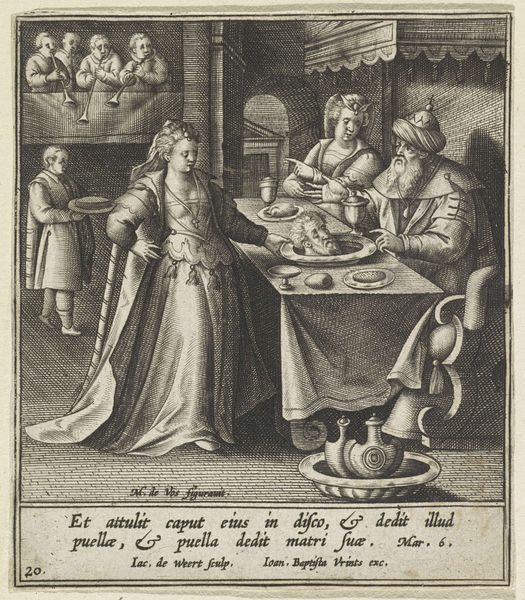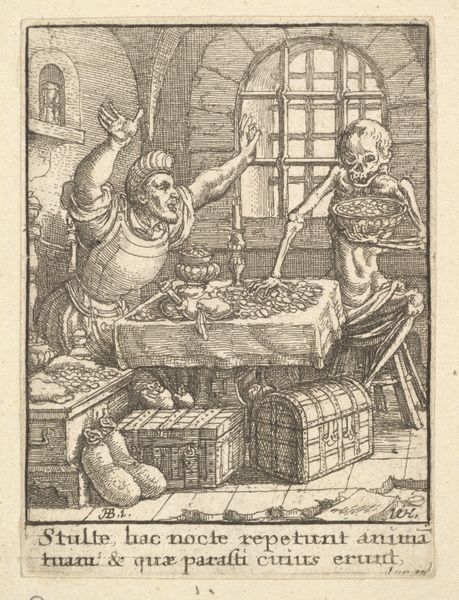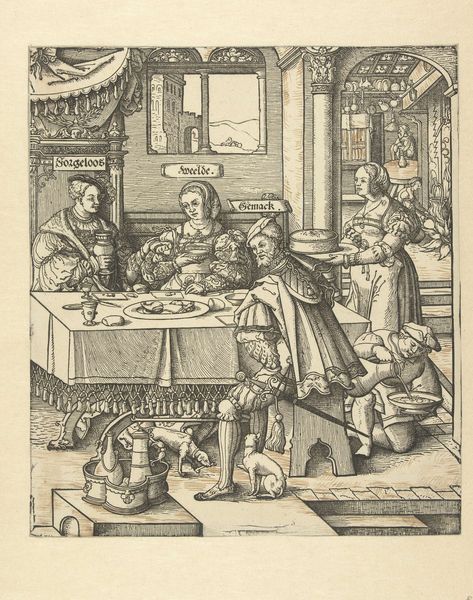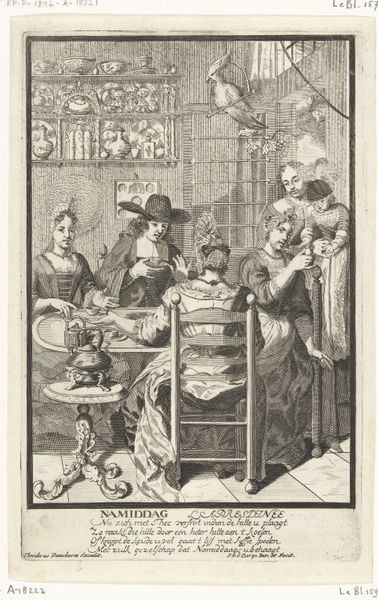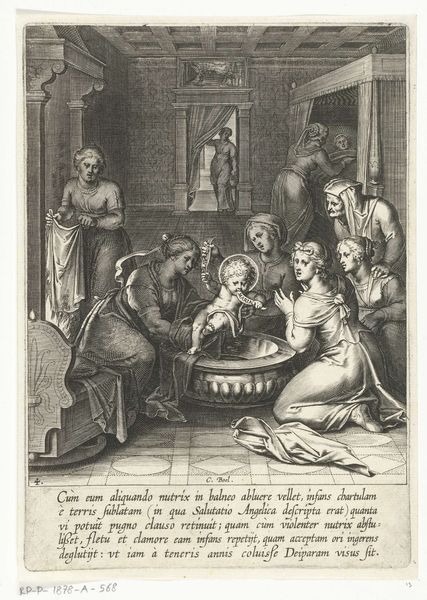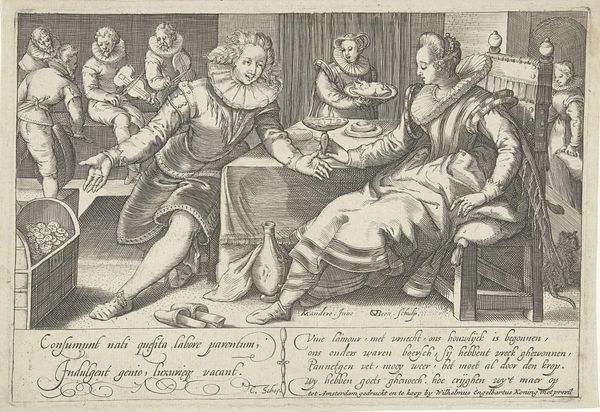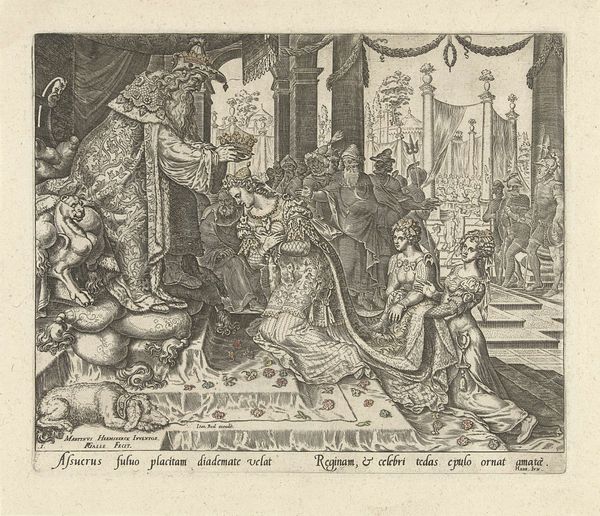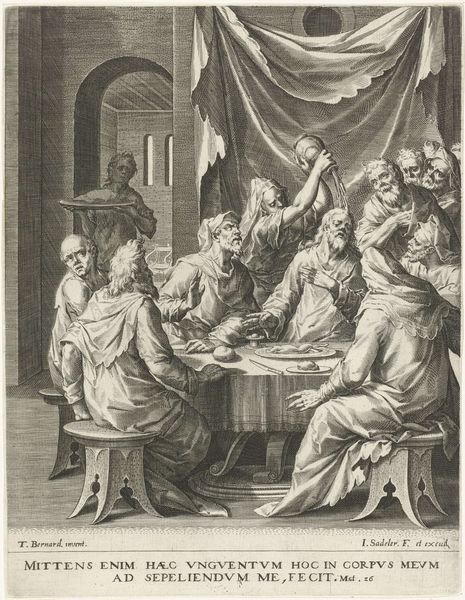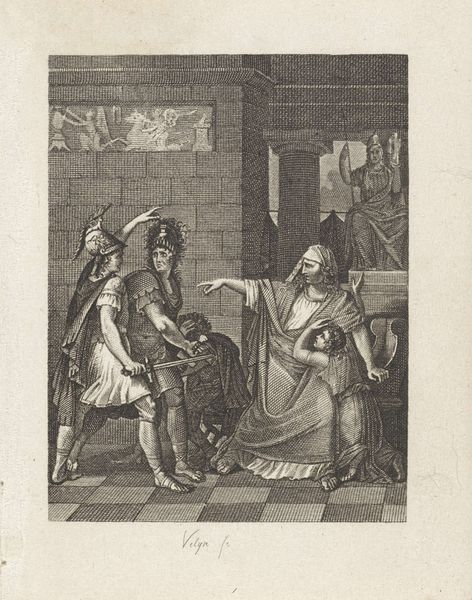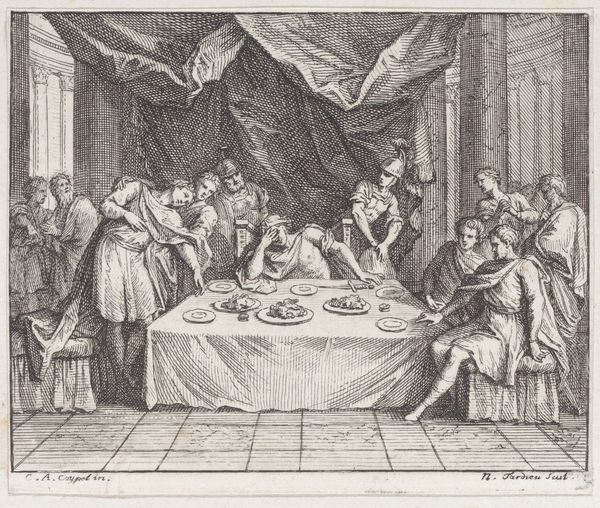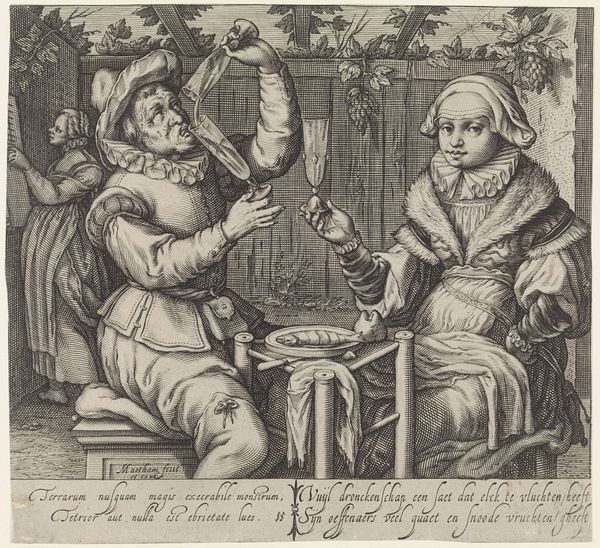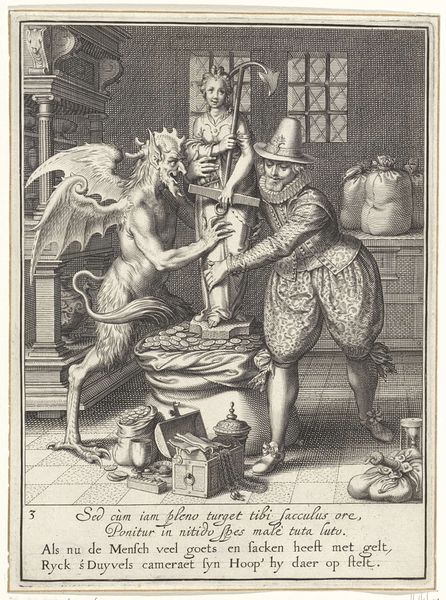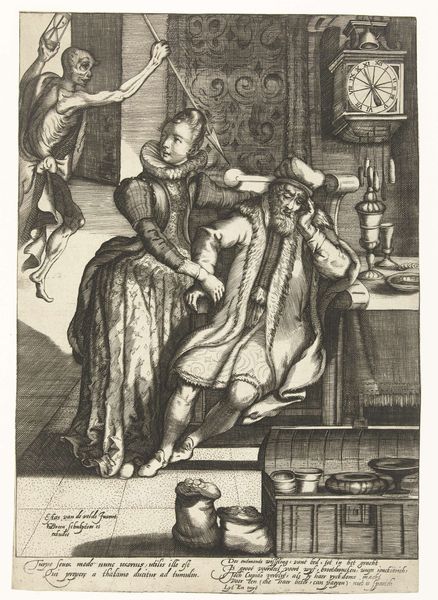
print, engraving
#
narrative-art
# print
#
old engraving style
#
figuration
#
pen work
#
history-painting
#
northern-renaissance
#
engraving
Dimensions: height 108 mm, width 89 mm
Copyright: Rijks Museum: Open Domain
Curator: Jacob de Weert, working from a design by Maerten de Vos, created this engraving sometime between 1580 and 1600. It's titled "Herodes zweert Salomes wens te vervullen," which translates to "Herod Swears to Fulfill Salome's Wish." Editor: It has a grim kind of atmosphere, even though the lines are so intricate. I'm immediately drawn to how everything's so meticulously etched—each face, each fold in the fabric. What kind of printing technique did they use? Curator: This is an engraving, which means the artist used a tool called a burin to carve lines into a metal plate, probably copper. Ink is then applied to the plate, filling those grooves. The surface is wiped clean, and then paper is pressed against the plate to transfer the ink. Editor: So, it's a really subtractive process in some ways—the artist carving away at the material to create the image. This kind of reminds me of the work involved. I like the layers in it. It makes it clear how many decisions he must have had to make in constructing the overall scene. What kind of workshop did De Weert have? What was the division of labour when constructing such a small image with this density? Curator: The print illustrates a rather infamous biblical tale from the New Testament. Salome, at her mother's instigation, demands the head of John the Baptist as payment for her dance before King Herod. What makes the image really gripping, I think, is the casual air around this truly ghastly request. It reminds me that it had to be designed. An actual person had to be paid and sat at a desk constructing each line with the burin you mentioned. There were materials, a patron involved somewhere… It is strange, right? To think about it on such a level! Editor: The engraving style, with its precise lines and dramatic shading, amplifies the narrative's intensity, especially within the small print. Knowing about the artist's choices and the painstaking processes gives us a sense of this particular story’s relevance. We can almost hear the burin scratching against the metal. Curator: Thinking about process can be quite an emotional thing for a print like this: labor made real as it reflects across these old stories, across the very different worlds of art and myth, past and present… Editor: Right, absolutely. Seeing it through this process-focused lens reveals the value in art that we've missed in similar artwork through time. It gives new ways for considering production as art and labor as having creative significance in every time period.
Comments
No comments
Be the first to comment and join the conversation on the ultimate creative platform.
